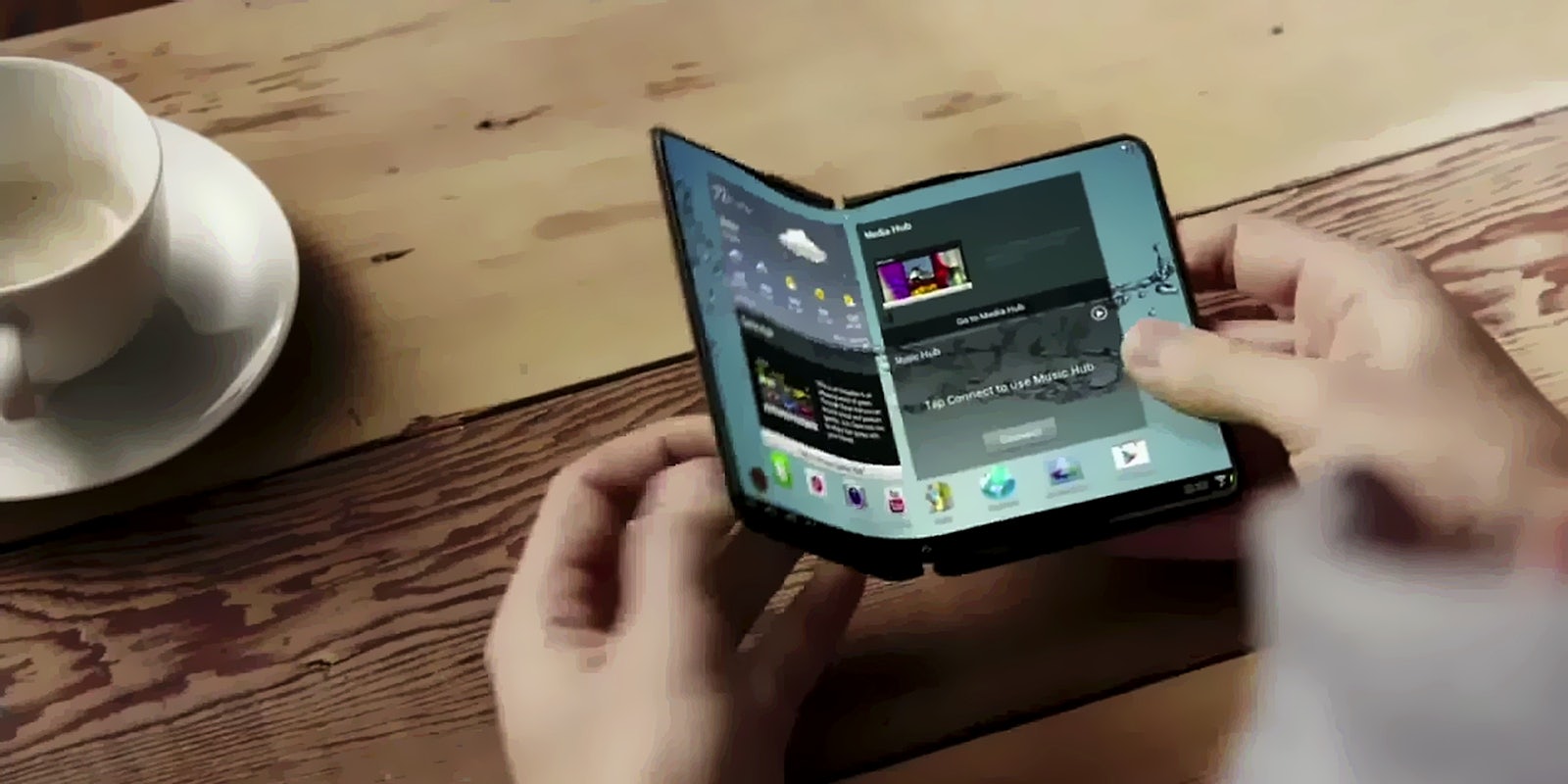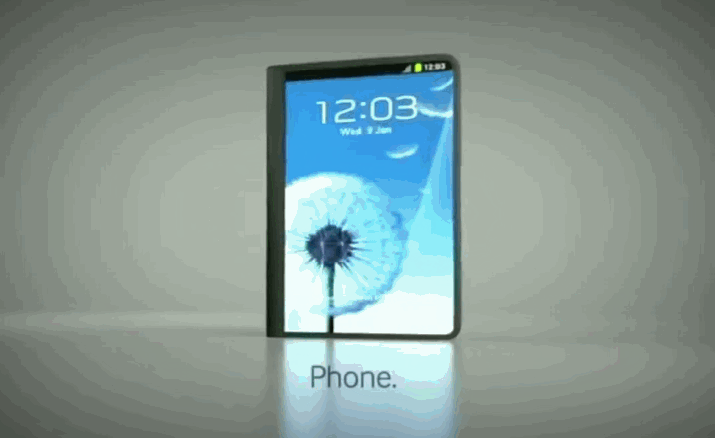Samsung and LG are planning to release foldable smartphones later this year, according to the Korea Herald. No, we aren’t going back to the days of the flip phone, we’re moving toward a time when smartphones fold out to become tablets.
The Herald says it is “highly likely” that Samsung will release 100,000 units by Q3 of this year, while LG is rumored to match that number and release in the last quarter of 2017.
These reports come after years of rumors that the South Korean giants would release foldable phones with flexible displays. Back in 2015, a Samsung official told Business Korea, “The industry believes that the commercialization of foldable smartphones will be possible in 2016.”
Now rumors have followed us into 2017.
The Korea Herald did include a pretty big disclaimer. According to the newspaper, multiple sources say that despite technical completion, Samsung has not made a final decision whether to unveil the device this year because of potential “marketability and profitability issue(s).” Internal personnel reshuffling from the Galaxy Note 7 fiasco certainly hasn’t helped move things along either.
LG seems to have a clearer path to market, and has “more advanced technology than Samsung,” according to sources with the Herald. The company has been working on the project for two to three years now, and could end up selling its technology to the likes of Huawei or Apple.
It’s hard to image how much the first few generations of foldable phones would cost, especially given that prices for flagship devices still hover around the $1,000 mark. If a company like Apple could run with the idea and bring it to the masses, we may soon see the much-needed evolution of the smartphone, far away from the ‘thin and light’ trend manufacturers seem to prioritize.
Now Samsung just needs to figure out how to produce a battery that can power two screens.
Update 3:50pm CT, March 16: Korean news site ETNews corroborates the Herald report. It says that Samsung will begin producing “thousands” of these foldable phones this year, followed by a full launch in 2018.
H/T Engadget



